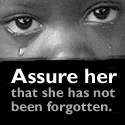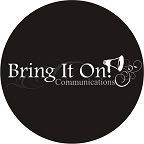Being that all of the beings who are reading this are human beings (!), I think I can safely assume that we all need to change in one way or another. In ‘How People Change ,’ authors Timothy S. Lane and Paul David Tripp provide important information on how to bring about lasting change.
,’ authors Timothy S. Lane and Paul David Tripp provide important information on how to bring about lasting change.
Here is the ‘blurb’ on the back cover of the book:
What does it take for lasting change to take root in your life? If you’ve ever tried, failed, and wondered why, you need How People Change . This book explains the biblical pattern for change in a clear, practical way you can apply to the challenges of daily life. But change involves more than a biblical formula: you will see how God is at work to make you the person you were created to be. That powerful, loving, redemptive relationship is at the heart of all positive change you experience.
. This book explains the biblical pattern for change in a clear, practical way you can apply to the challenges of daily life. But change involves more than a biblical formula: you will see how God is at work to make you the person you were created to be. That powerful, loving, redemptive relationship is at the heart of all positive change you experience.
Dr. Lane and Dr. Tripp start off with the premise that there is a Gospel Gap. People are blind to the power and hope of the gospel today. They describe three kinds of blindness in believers:
1. The blindness of identity – our identity in Christ
2. The blindness of the awareness of God’s presence in our lives here on earth
3. The blindness to God’s process – our acceptance into the family of God is the beginning of God’s work in us.
They go on to explain what fills the Gap:
1. Formalism – filling up our time with church activities
2. Legalism – this is “not just a reduction of the gospel, it is another gospel altogether (see Galatians), where salvation is earned by keeping the rules we have established” (p. 8)
3. Activism – “whenever you believe that the evil outside you is greater than the evil inside you, a heartfelt pursuit of Christ will be replaced by a zealous fighting of the “evil” around you” (p. 9)
4. Biblicism – the gospel is reduced to a mastery of biblical content and theology.
5. “Psychology-ism” – “whenever you view the sin of another against you as a greater problem than your own sin, you will tend to seek Christ as your therapist more than you seek him as your Savior” (p. 10)
The gentlemen also make the important point that we need to see the Big Picture – that our earthly time is so brief compared to eternity. That helps us accept that the Lord is sovereign and working on our behalf. We need to prepare for the “final destination” (p. 43) – it will redirect our thinking.
The big picture consists of the following elements:
1. Heat – this is the person’s situation in daily life, with difficulties, blessings, and temptations.
2. Thorns – this is the person’s ungodly response to the situation. It includes behavior, the heart driving the behavior, and the consequences that result.
3. Cross – this focuses on the presence of God in his redemptive glory and love. Through Christ, he brings comfort, cleansing, and the power to change.
4. Fruit – this is the person’s new godly response to the situation resulting from God’s power at work in the heart. It includes behavior, the heart renewed by grace, and the harvest of consequences that follow. (pp. 83-85)
The book is chock full of real-life examples of wrong thinking, and the antidote – the godly alternative. It is of highly practical value.
Another matter of utmost importance is for us to see ourselves as the Bride of Christ. What does it mean to be married to Christ? The authors explain:
Christ has made us the recipients of his affection, and, in turn, we are to make him the ultimate objects of ours. Paul speaks to the Corinthians as a jealous father who wants nothing to supplant or compromise this relationship. He urges the Corinthians to shun false saviors and false gospels and to place their hopes and affections solely on Christ. (p. 50)
This is not from the book, but I love this portrait of “Who I Am in Christ.” We all need to realize that; we will all be so much better off, and we will come closer to living out the life of Christ.
The gentlemen also emphasize the importance of being involved with a community of believers. The Godhead – Father, Son, and Holy Spirit – “lives in perfect harmony, love, and unity” (p. 67). We need to do the same.
The book ends by discussing the four elements of the big picture, and looking at them in great detail, as well as examining the life of one couple and the example of one church.
Timothy S. Lane is executive director of CCEF (Christian Counseling and Educational Foundation), faculty member, and a counselor with almost twenty years of experience. He is the coauthor of CCEF's 'Transformation Series' curriculum and 'Relationships: A Mess Worth Making .' He and his wife, Barbara, are the parents of two daughters and two sons.
.' He and his wife, Barbara, are the parents of two daughters and two sons.
Paul David Tripp is the president of Paul Tripp Ministries, is on the pastoral staff at Tenth Presbyterian Church, adjunct faculty at CCEF, and has counseled for over twenty-five years. He is the author of several other books, including 'Instruments in the Redeemer's Hands: People in Need of Change ,' 'Broken-Down House
,' 'Broken-Down House ,' 'A Quest for More: Living for Something Bigger Than You
,' 'A Quest for More: Living for Something Bigger Than You ,' and 'War of Words: Getting to the Heart of Your Communication Struggle
,' and 'War of Words: Getting to the Heart of Your Communication Struggle .' He and his wife, Luella, are the parents of three sons and a daughter.
.' He and his wife, Luella, are the parents of three sons and a daughter.
I must admit that I tend to steer clear of what seem to be ‘self-help’ books. But this book is clearly a ‘Christ-help’ book. It has been apparent to me for a long time that the only real change happens in a person when that person allows Christ and the Holy Spirit to do their repairs in them. In fact, the ‘motto’ of CCEF is ‘Restoring Christ to Counseling & Counseling to the Church.’ That is exactly what is needed. Freudian psychology has infiltrated the church – and lasting change is not found in that type of counseling (I have a degree in Psychology; I have the right to say that!). I am so appreciative of Dr. Lane and Dr. Tripp for writing such a valuable book, and for compiling these principles in one place.
You can order the book here .
.
This book was provided to me by New Growth Press for review purposes; you can also order the book there.






























.jpg)







No comments:
Post a Comment